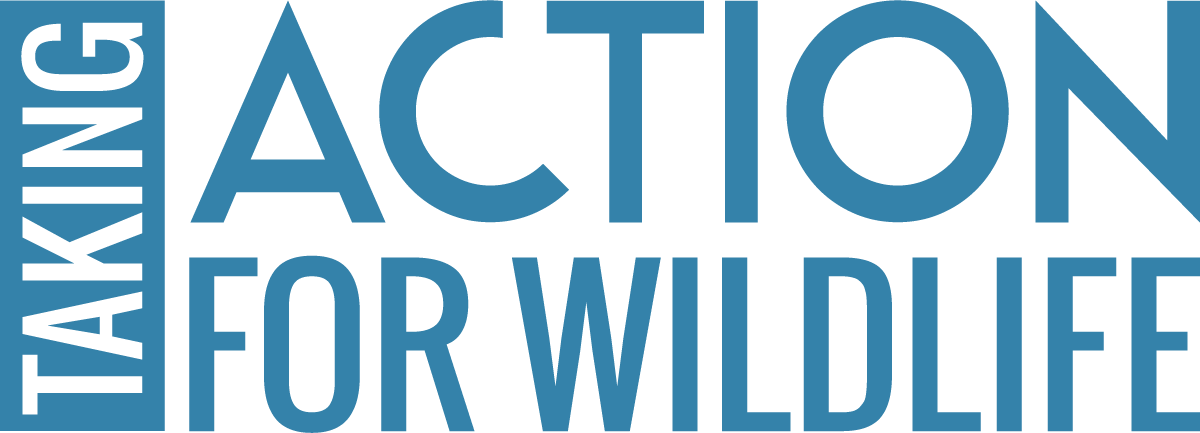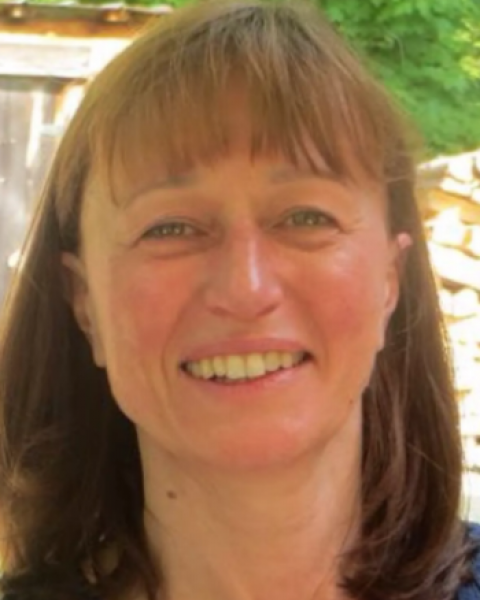2022 Community Conservation Cohort Gets it Done!
The Community Conservation Cohort is all about empowering conservation commissions to get one-the-ground projects to protect wildlife and habitats developed and under way, and the 2022 Cohort delivered! The team gathered for the final session on April 20, 2023 to present the results of their projects on topics including preserving wildlife corridors, education about the importance of wildlife and habitats, nature on public trails, and managing land for pollinators and nesting birds.
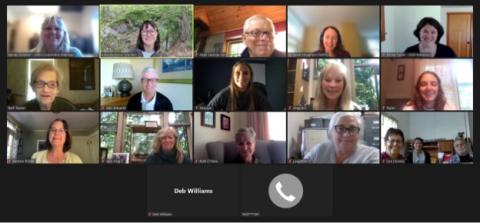
After cohort training was completed in the fall, the group of four communities and 14 participants got to work on their projects under the guidance of a TAFW team member assigned to advise each community cohort group. Project work continued over the course of winter and into spring. Read on the learn what they accomplished!
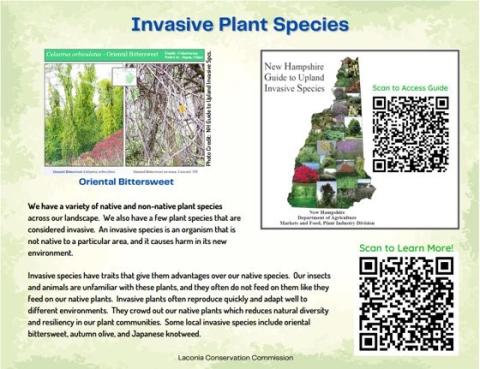
WOW - what a great opportunity! Laconia decided to tackle the public multi use WOW trail (threading through three lakes - Winnepesaukee, Opechee and Winnisquam) - with signage to educate the public about the important natural resources along the way.
Cohort members identified topics for five signs to be located along a half-mile section of the trail. Members developed the text for the topics including: what is a watershed, the impacts of rising air temperatures on aquatic life, identifying and controlling invasive species, creating rain gardens to protect water quality, and building pollinator gardens to support local wildlife species.
The signs have been designed and each sign features a QR code where people can find additional information about the topic. The cohort has been working on fundraising for the signs and posts for the project. They noted that the project involved a lot of coordination with city departments including the Department of Public Works and the Department of Parks and Recreation, as well as organizations such as the WOW Trail Committee. This collaboration has led to good working relationships among these groups. Future activities include constructing several gardens along the trail. These will be used to demonstrate actions that people can take to create healthy natural systems and reduce runoff into the lake.
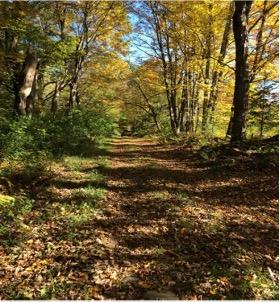
Wildlife habitat is a priority and Lisbon wasn’t about to let a major winter snowstorm stand in their way! The Cohort’s goal was to raise public awareness of the value of wildlife habitats and corridors in town to build future support for protecting these valuable resources before it is too late. They created a Lyman Wildlife & Habitats maps page to make the maps available to community residents. To get other town boards involved, they started by discussing wildlife habitats and maps with the select board and requested funds for a May 23 public outreach program (received!). They also met with the planning board to reinvigorate the town master plan with this project contributing to an Updated Natural Resources chapter. Then on a stormy night, when most other NH towns postponed town meeting, Lisbon forged ahead and presented the wildlife maps to the community and described the work the conservation commission was planning (all while the snow was piling up outside!). They lined up speakers from Ammonoosuc Conservation Trust and UNH Extension for a May education session, which they are planning with the adjacent communities of Landaff and Lisbon as they consider shared goals. As they move forward, they plan to display the wildlife maps in a section of town hall, and are planning to start work on the Natural Resources chapter of their master plan, which will also serve as their natural resources inventory. They also plan to investigate future considerations of wetlands setback ordinances. We love how small steps create the momentum for bigger projects!

At only 12 acres Rye’s Goss Farm property is small but mighty. It is a rare gem of a property that protects both natural and community resources. It abuts critically important salt marsh habitat, is home to the town’s community garden, has a barn (that is home to bats), fields, pollinator habitat, and more. The Rye Conservation Commission quickly and easily identified Goss Farm as the focus of their Cohort project. They knew that a small pollinator meadow, created a few years ago, needed some improvement. They connected with local resources and professionals and coordinated with the town’s fire department to come up with a plan. They did a controlled burn of the meadow in mid-April 2023, which will be followed up with lime, and seeding native wildflowers. Their primary goal with this work is to increase insect biodiversity on the property, promoting native pollinators, while also benefiting the gardens on the property. The commission also formally defined an area of the property for delayed mowing to benefit both birds and pollinators, and planted native trees and shrubs. The conservation commission really wanted to share the purpose of their work with the community so they will be creating signs to explain the pollinator habitat and delayed mowing to visitors. They also created an iNaturalist project for the Goss Farm property and will be hosting a mini bioblitz to help better understand what species of wildlife and plants call Goss Farm home.
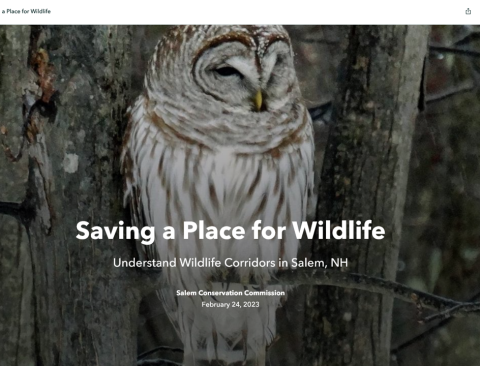
Even though Salem is in a heavily urban area of the state, the cohort recognized the importance of keeping the remaining large corridors supporting wildlife intact. They wanted to identify these wildlife corridors and educate the public in protecting these important areas. With the help of their town GIS staff, they identified four target areas for wildlife habitat protection. They plan to encourage landowners along the corridor to adopt stewardship practices to protect and restore wildlife habitat, and to encourage wildlife management in the corridor through educational programs, hikes and social media. Their outreach efforts included the creation of a story map that highlights the importance of wildlife corridors in Salem and the need to protect these critical resources. The goal of the story map is to capture the interest in wildlife, document wildlife observations, and get the attention of community leaders. The story map encourages public participation by offering an online site where people can log wildlife sightings and share their experiences with nature. The Salem Conservation Commission also plans to install wildlife cameras in their town forest to document species using the corridor. Finally, they plan to incorporate wildlife habitats and corridors into the upcoming Master Plan Update. Salem shows what can be done to protect wildlife in an urban community!

